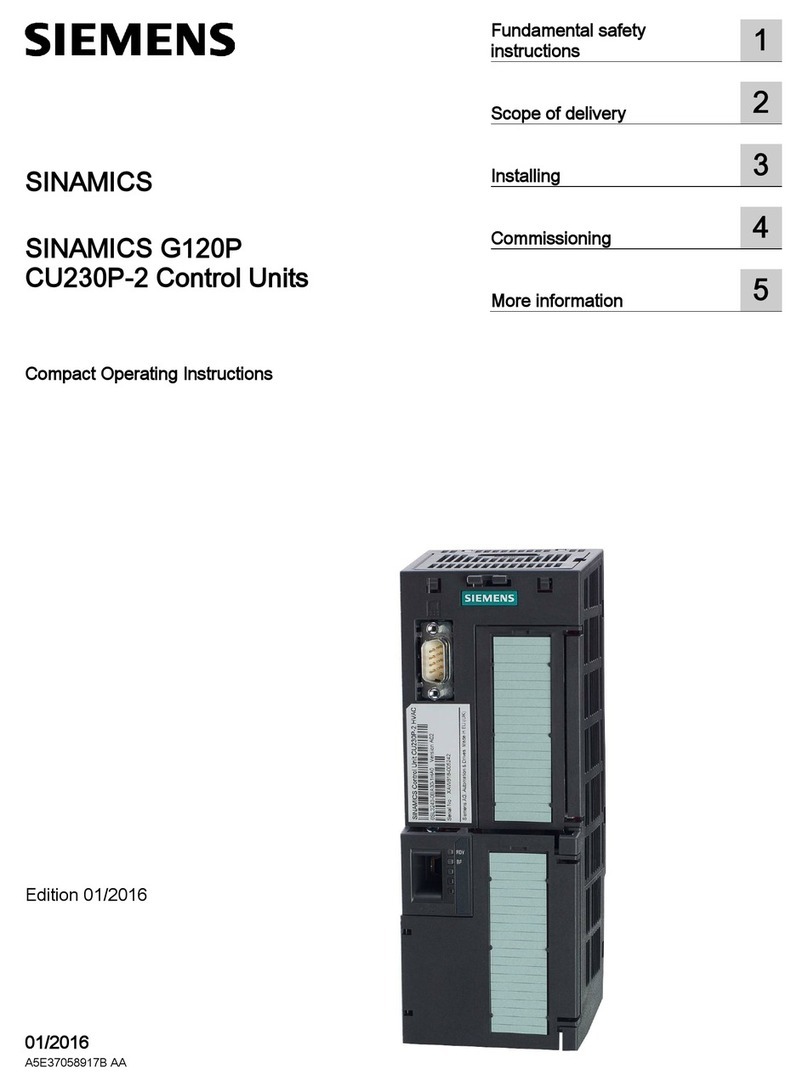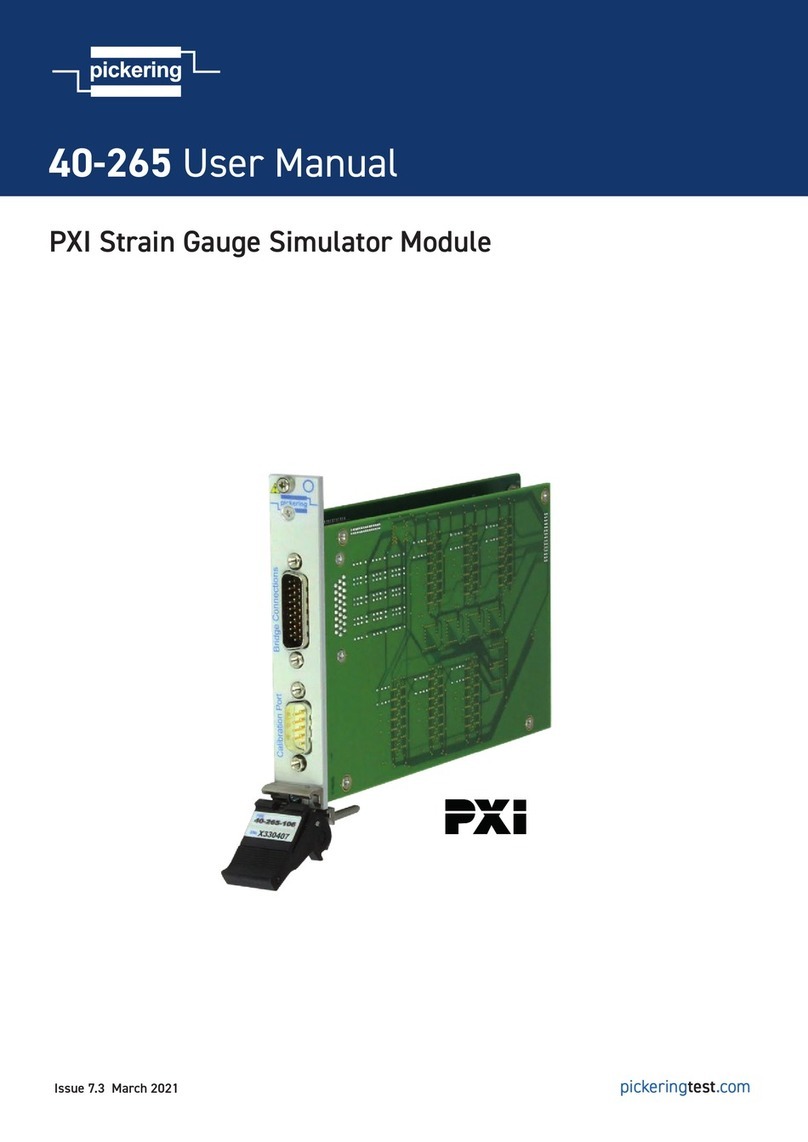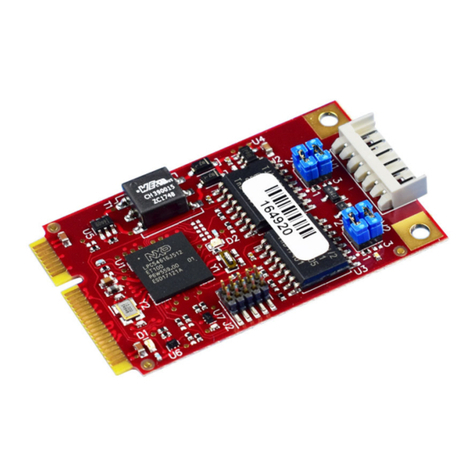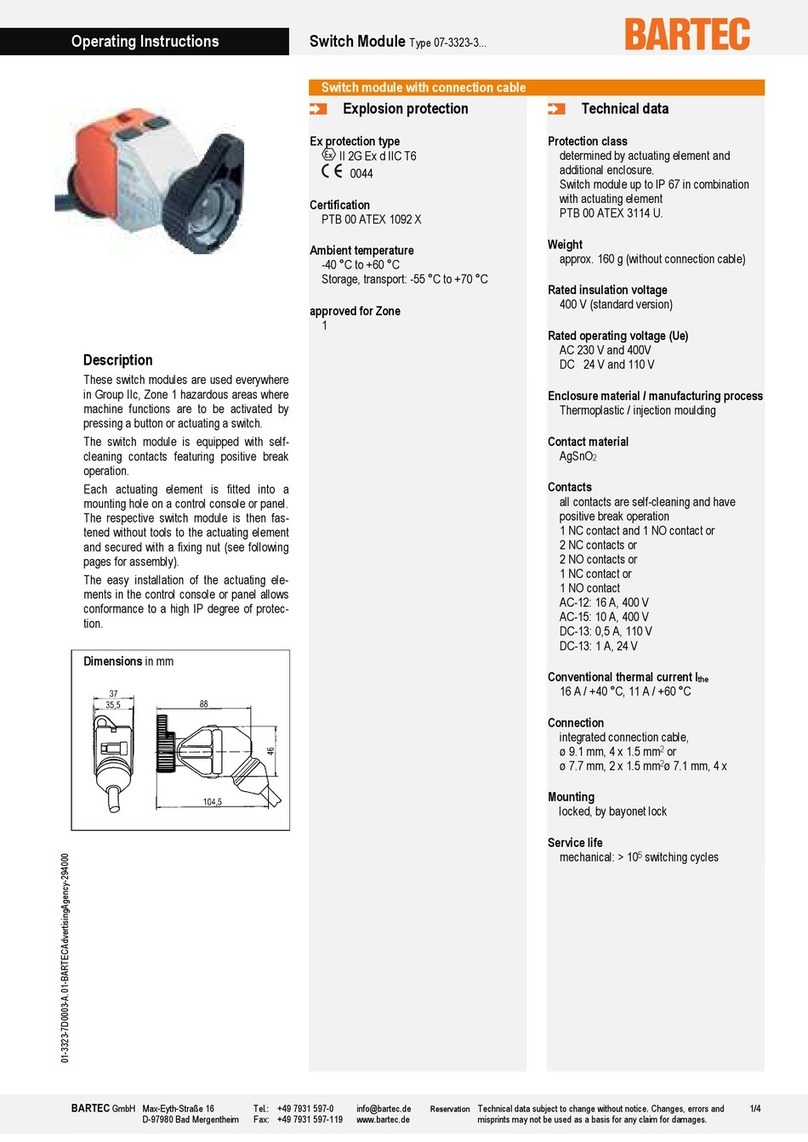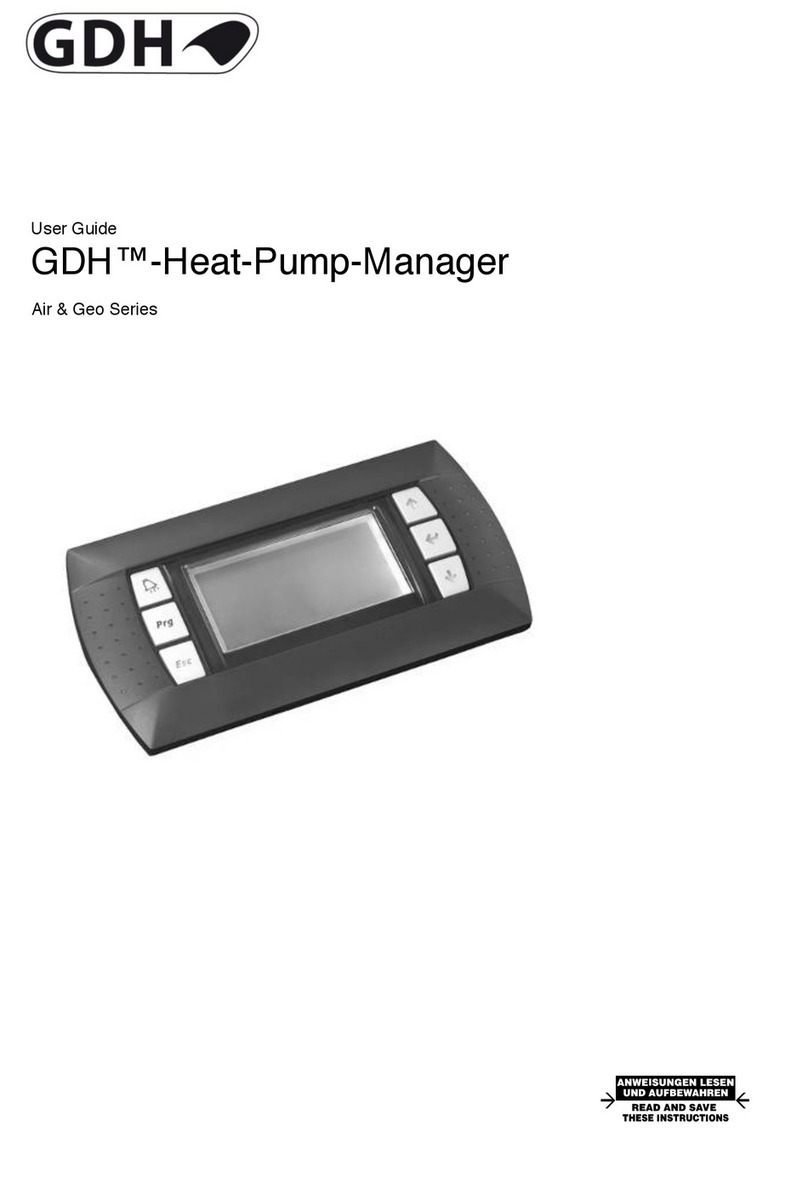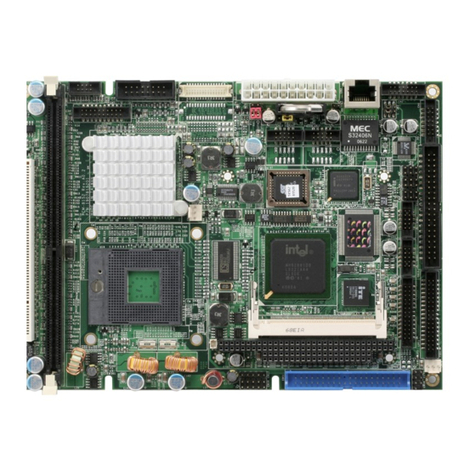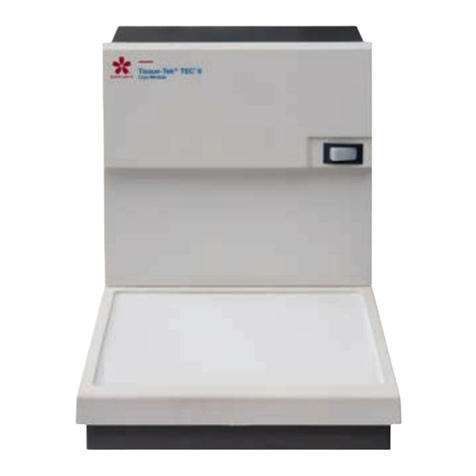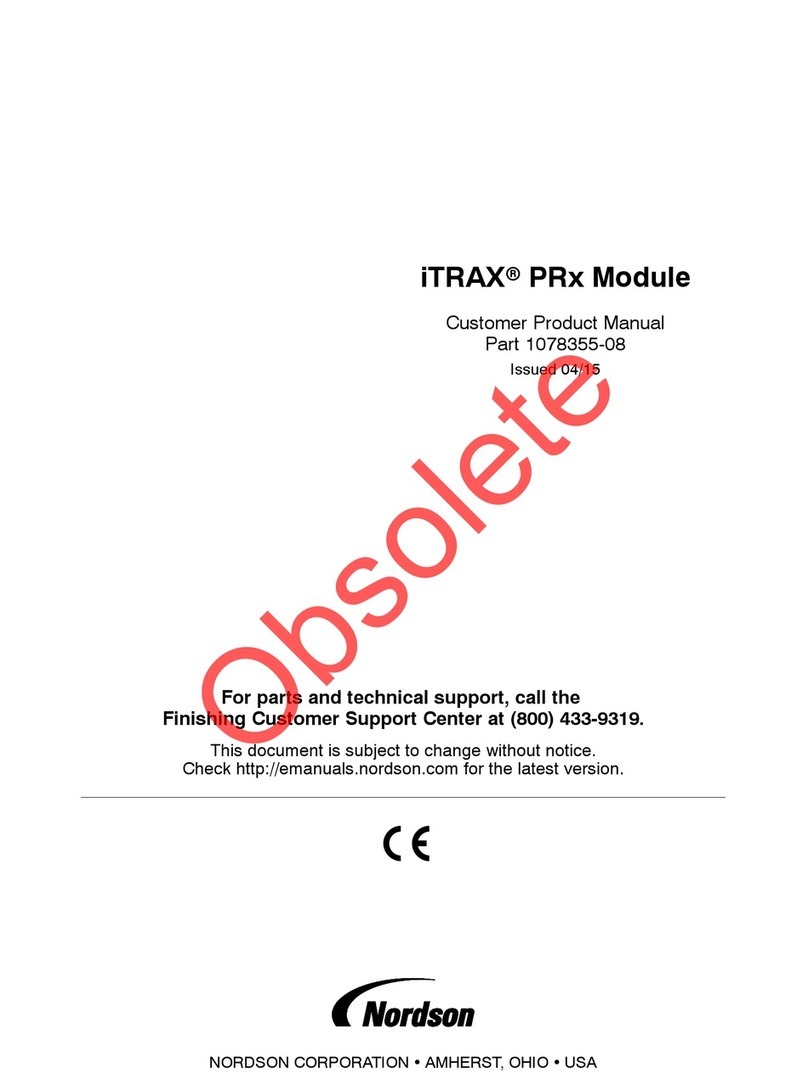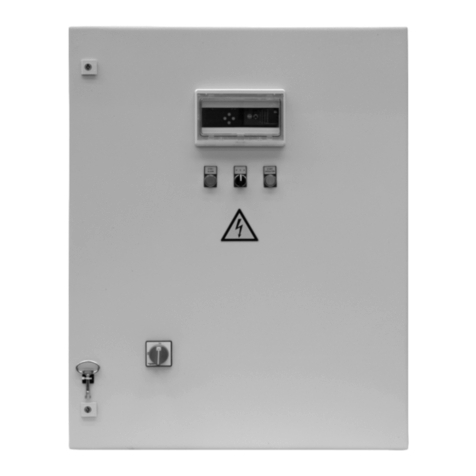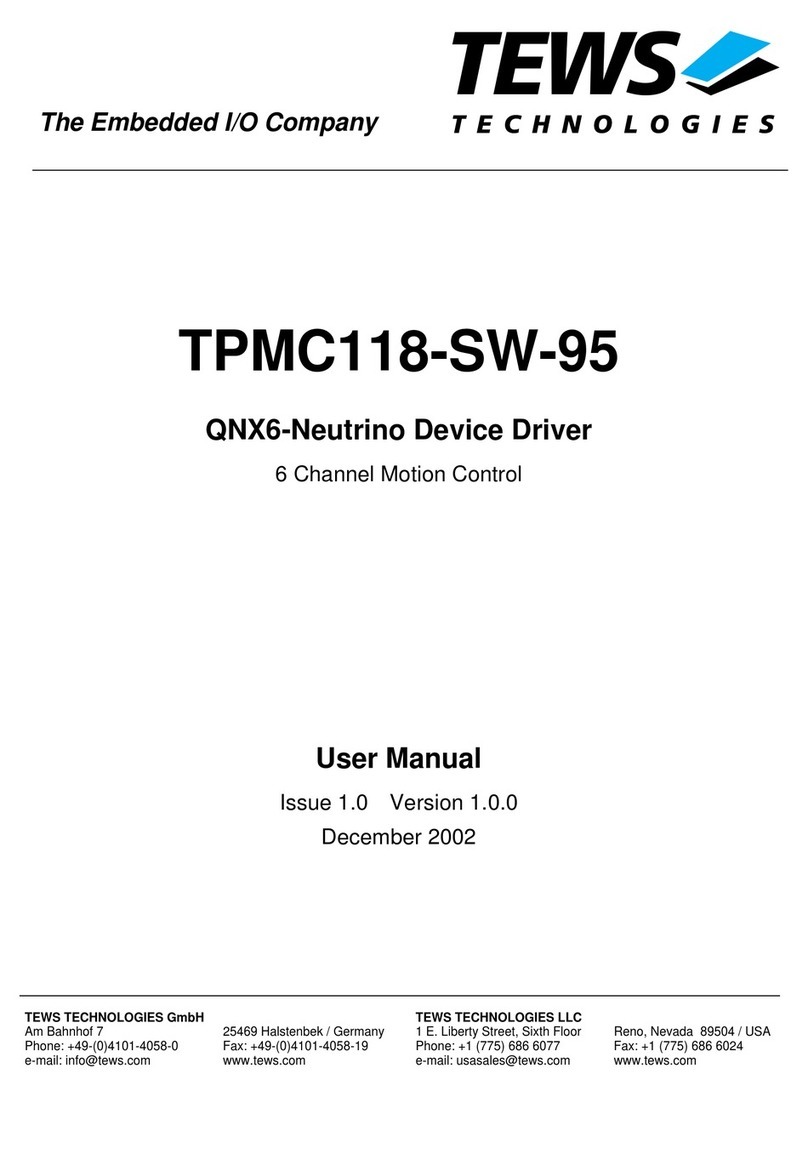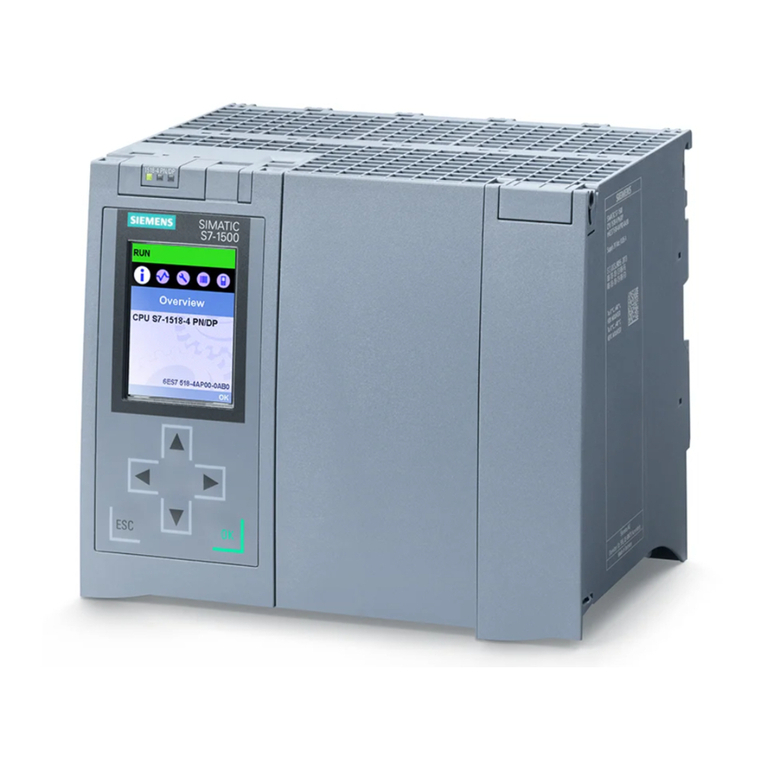bonitron M3528M4 User manual

Model M3528M4
Battery Voltage Monitor Module
Customer Reference Manual

Bonitron, Inc.
2
Bonitron, Inc.
Nashville, TN
An industry leader in providing solutions for AC drives.
ABOUT BONITRON
Bonitron designs and manufactures quality industrial electronics that improve the reliability of
processes and variable frequency drives worldwide. With products in numerous industries, and
an educated and experienced team of engineers, Bonitron has seen thousands of products
engineered since 1962 and welcomes custom applications.
With engineering, production, and testing all in the same facility, Bonitron is able to ensure its
products are of the utmost quality and ready to be applied to your application.
The Bonitron engineering team has the background and expertise necessary to design, develop,
and manufacture the quality industrial electronic systems demanded in today’s market. A strong
academic background supported by continuing education is complemented by many years of
hands-on field experience. A clear advantage Bonitron has over many competitors is combined
on-site engineering labs and manufacturing facilities, which allows the engineering team to have
immediate access to testing and manufacturing. This not only saves time during prototype
development, but also is essential to providing only the highest quality products.
The sales and marketing teams work closely with engineering to provide up-to-date information
and provide remarkable customer support to make sure you receive the best solution for your
application. Thanks to this combination of quality products and superior customer support,
Bonitron has products installed in critical applications worldwide.

Bonitron, Inc.
3
AC DRIVE OPTIONS
In 1975, Bonitron began working with AC inverter drive specialists at synthetic fiber plants to
develop speed control systems that could be interfaced with their plant process computers. Ever
since, Bonitron has developed AC drive options that solve application issues associated with
modern AC variable frequency drives and aid in reducing drive faults. Below is a sampling of
Bonitron’s current product offering.
WORLD CLASS PRODUCTS
Undervoltage Solutions
Overvoltage Solutions
Uninterruptible Power for Drives
(DC Bus Ride-Thru)
Voltage Regulators
Chargers and Dischargers
Energy Storage
Braking Transistors
Braking Resistors
Transistor/Resistor Combo
Line Regeneration
Dynamic Braking for Servo Drives
Common Bus Solutions
Portable Maintenance Solutions
Single Phase Power Supplies
3-Phase Power Supplies
Common Bus Diodes
Capacitor Formers
Capacitor Testers
Power Quality Solutions
Green Solutions
12 and 18 Pulse Kits
Line Regeneration

M3528M4
4
This page intentionally left blank

Table of Contents
5
1. INTRODUCTION..........................................................................................................................7
1.1. Who Should Use...........................................................................................................................7
1.2. Purpose and Scope........................................................................................................................7
1.3. Manual Version and Change Record............................................................................................7
Figure 1-1: Model M3528M4......................................................................................................................7
2. PRODUCT DESCRIPTION............................................................................................................9
2.1. Related Products........................................................................................................................... 9
2.2. Part Number Breakdown ..............................................................................................................9
2.3. General Specifications..................................................................................................................9
Table 2-1: General Specifications Table......................................................................................................9
2.4. General Precautions and Safety Warnings .................................................................................10
3. INSTALLATION INSTRUCTIONS................................................................................................11
3.1. Environment ...............................................................................................................................11
3.2. Unpacking................................................................................................................................... 11
3.3. Wiring and Customer Connections.............................................................................................11
Figure 3-1: Typical Interconnection ..........................................................................................................12
3.3.1. Power Wiring....................................................................................................................13
3.3.2. I/O Wiring.........................................................................................................................13
Table 3-1: Wiring Specifications TB1.......................................................................................................13
Table 3-2: Wiring Specifications TB2.......................................................................................................13
Table 3-3: Wiring Specifications TB3.......................................................................................................14
Table 3-4: Wiring Specifications TB4.......................................................................................................14
4. OPERATION..............................................................................................................................15
4.1. Functional Description ...............................................................................................................15
4.2. Features....................................................................................................................................... 15
4.2.1. Operation ..........................................................................................................................15
4.2.2. Connectors........................................................................................................................ 16
4.2.3. Jumpers............................................................................................................................. 17
Figure 4-1: JP1...........................................................................................................................................17
Figure 4-2: JP2...........................................................................................................................................17
4.2.4. Ribbon Connector.............................................................................................................18
Table 4-1: Blink Patterns...........................................................................................................................18
5. TROUBLESHOOTING ................................................................................................................19
5.1. Status Relays won’t close ...........................................................................................................19
5.2. Status LED remains blinking after changing the blown fuse .....................................................19
5.3. Battery Overvoltage....................................................................................................................19
5.4. Battery Undervoltage..................................................................................................................19
5.5. Over Temperature.......................................................................................................................19
6. ENGINEERING DATA................................................................................................................21
6.1. Ratings........................................................................................................................................21
6.2. Dimensions and Mechanical Drawings ......................................................................................21
Figure 6-1: M3528M4 Dimensional Outline Drawing ..............................................................................21
Figure 6-2: M3528D4 Battery Monitoring Panel Mounting Information..................................................21

M3528M4
6
This page intentionally left blank

User’s Manual
7
1. INTRODUCTION
1.1. WHO SHOULD USE
This manual is intended for use by anyone who is responsible for integrating, installing,
maintaining, troubleshooting, or using this equipment with any DC energy storage system.
Please keep this manual for future reference.
1.2. PURPOSE AND SCOPE
This manual is a user’s guide for the Model M3528M4 Battery Voltage Monitor Module. It
will provide the user with the necessary information to successfully install, integrate, and
use the M3528M4.
In the event of any conflict between this document and any publication and/or
documentation related to the DC storage system, the latter shall have precedence.
1.3. MANUAL VERSION AND CHANGE RECORD
Rev 00 is the initial release of this manual.
About Bonitron Section was updated in Rev 00a.
The manual template was updated in Rev 00b.
Figure 1-1: Model M3528M4

M3528M4
8
This page intentionally left blank

User’s Manual
9
2. Product Description
DC voltage monitoring is required for battery storage systems to ensure individual battery
voltages are within safe tolerances. If a battery discharges too far, individual cells may change
polarity, causing permanent damage to the batteryand reducing its lifetime. A battery subjected
to an overvoltage can produce harmful or explosive gases and lead to dangerous conditions
and severe battery damage. Batteries, capacitors, and any other system can be damaged by
the voltage across them rising too high. The M3528M4 voltage monitor is designed to monitor
DC voltage levels and signal the user if the voltage departs a set range.
The M3528M4 monitors a series of 12V batteries and signals the user if:
One or more of the battery’s voltages fall below the undervoltage set point
One or more of the battery’s voltages exceeds the overvoltage set point
A fuse is blown
Over-temperatures exist
2.1. RELATED PRODUCTS
This product is designed for use with battery strings connected in series to attain a higher
terminal voltage, such as the Bonitron M3528B Battery Storage Modules.
The M3528D4 Local Display is used with this monitor board to allow for a visual indication
of the storage system status for mounting in a door or access cover of the storage system.
Contact your distributor for more information.
2.2. PART NUMBER BREAKDOWN
The Base Model Number, M3528, indicates that the unit is related to storage system
components. ‘M’ specifies a monitor board, and ‘4’ specifies this particular unit.
There are no options at this time.
2.3. GENERAL SPECIFICATIONS
Table 2-1: General Specifications Table
PARAMETER
SPECIFICATION
Power
24 VDC ± 10%, 200mA
Monitor Voltages
10 batteries (0-15VDC) each
Outputs
(10) Good Battery Open Collector (24VDC, 150mA Max)
(11) LED driver outputs for remote LED display
(1) Not Undervoltage - Open Collector (24VDC, 150mA Max)
(1) Not Overvoltage- Open Collector (24VDC, 150mA Max)
(1) Not Overtemp - Open Collector (24VDC, 150mA Max)
(1) Not Blown fuse - Open Collector (24VDC, 150mA Max)
(2) Status - Relay output (250VDC, 230VAC, 3A MAX.)
(1) Not Under Voltage Relay output (250VDC, 230VAC, 3A MAX.)
Inputs
(1) Reset –Active Low, Open Base (24VDC)
Local Indicators
Power, Status
Storage Temp
-20 to +65ºC
Operation Temp
0 to +40ºC
Humidity
Below 90% non-condensing
Atmosphere
Free of corrosive gas and conductive dust

M3528M4
10
2.4. GENERAL PRECAUTIONS AND SAFETY WARNINGS
DANGER!
HIGH VOLTAGES MAY BE PRESENT !
FAILURE TO HEED THESE WARNINGS MAY
RESULT IN SERIOUS BODILY INJURY OR DEATH!
CAUTION!
NO USER-SERVICEABLE PARTS ARE CONTAINED WITHIN
THIS PRODUCT.INOPERABLE UNITS SHOULD BE
REPLACED OR RETURNED FOR EVALUATION AND/OR
REPAIR BY QUALIFIED TECHNICIANS.
BEFORE ATTEMPTING INSTALLATION OR REMOVAL OF
THIS PRODUCT ,BE SURE TO REVIEW ALL DRIVE AND/OR
RESISTIVE LOAD DOCUM ENTATION FOR PERTINENT
SAFETY PRECAUTIONS.
INSTALLATION AND /OR REM OVAL OF THIS PROD UCT
SHOULD ONLY BE ACCOMPLISHED BY A QUALIFIED
ELECTRICIAN IN ACCOR DANCE WITH NATIONAL
ELECTRICAL CODE OR EQUIVALENT REGULATIONS.
ANY QUESTIONS AS TO APPLICATION, INSTALLATION, OR SERVICE
SAFETY SHOULD BE DIRECTED TO THE EQUIPMENT SUPPLIER.

User’s Manual
11
3. INSTALLATION INSTRUCTIONS
CAUTION!
Installation and/or removal of this product should only be performed by a
qualified electrician in accordance with National Electrical Code or local codes
and regulations.
Proper installation of the Model M3528M4 Battery Voltage Monitor Module should be
accomplished following the steps outlined below. Please direct all installation and start up
inquiries regarding this product to your supplier or system integrator.
3.1. ENVIRONMENT
The installation site should be dry and clean without extreme temperatures.
3.2. UNPACKING
Upon receipt of this product, please verify that the product received matches the product
that was ordered and that there is no obvious physical damage to the unit. If the wrong
product was received or the product is damaged in any way, please contact the supplier
from which the product was purchased.
3.3. WIRING AND CUSTOMER CONNECTIONS
This sectionprovides information about thefield connection of the batteries and signal inputs
to the M3528M4 Voltage Monitor Module.
Be sure to review all pertinent system documentation as well as the power wiring information
in Section 3.4.1 before proceeding.
Refer to Table 3-1 for the maximum wire size accepted by the individual field connection
terminals. Wire types and sizes should be chosen in accordance with national and local
electrical codes to meet the voltage and current levels present for your application.
Figure 3-1 shows a typical interconnection of the M3528M4 with a DC voltage source and
I/O signals.

M3528M4
12
Figure 3-1: Typical Interconnection
Dwg: 090113 Rev: 20090417

User’s Manual
13
CAUTION!
Only qualified electricians should perform and maintain the interconnection
wiring of this product. All wiring should be done in accordance with National
Electrical Code or equivalent regulations.
3.3.1. POWER WIRING
Internal or external 24V 200mA.
3.3.2. I/O WIRING
The I/O connectors connect the unit to the internal batteries to be monitored and to
external signals used to indicate the state of the monitor voltage.
Table 3-1: Wiring Specifications TB1
TERMINAL
FUNCTION
ELECTRICAL
SPECIFICATIONS
MIN WIRE
AWG
MAX WIRE
AWG
TORQUE
TB1-1
Fuse terminal note(1)
12VDC to TB1-2 1mA
24
12
.5 Nm
TB1-2
Battery 10 (+)
12VDC to TB1-3 1mA
24
12
.5 Nm
TB1-3
Battery 10 (-)
Battery 9 (+)
12VDC to TB1-4 1mA
24
12
.5 Nm
TB1-4
Battery 9 (-)
Battery 8 (+)
12VDC to TB1-5 1mA
24
12
.5 Nm
TB1-5
Battery 8 (-)
Battery 7 (+)
12VDC to TB1-6 1mA
24
12
.5 Nm
TB1-6
Battery 7 (-)
Battery 6 (+)
12VDC to TB1-7 1mA
24
12
.5 Nm
TB1-7
Battery 6 (-)
Battery 5 (+)
12VDC to TB1-8 1mA
24
12
.5 Nm
TB1-8
Battery 5 (-)
Battery 4 (+)
12VDC to TB1-9 1mA
24
12
.5 Nm
TB1-9
Battery 4 (-)
Battery 3 (+)
12VDC to TB1-10 1mA
24
12
.5 Nm
TB1-10
Battery 3 (-)
Battery 2 (+)
12VDC to TB1-11 1mA
24
12
.5 Nm
TB1-11
Battery 2 (-)
Battery 1 (+)
12VDC to TB1-12 1mA
24
12
.5 Nm
TB1-12
Battery 1 (-)
12VDC to TB1-11 1mA
24
12
.5 Nm
Note (1): Fuse must be connected to the negative terminal of the batteries series.
Table 3-2: Wiring Specifications TB2
TERMINAL
FUNCTION
ELECTRICAL
SPECIFICATIONS
MIN WIRE
AWG
MAX WIRE
AWG
TORQUE
TB2-1
+24V
24VDC 200mA
24
12
.5 Nm
TB2-2
0V
24VDC 200mA
24
12
.5 Nm

M3528M4
14
Table 3-3: Wiring Specifications TB3
TERMINAL
FUNCTION
ELECTRICAL
SPECIFICATIONS
MIN WIRE
AWG
MAX WIRE
AWG
TORQUE
TB3-1
Battery 1 status signal
Open Collector 24V 150mA (2)
24
12
.5 Nm
TB3-2
Battery 2 status signal
Open Collector 24V 150mA (2)
24
12
.5 Nm
TB3-3
Battery 3 status signal
Open Collector 24V 150mA (2)
24
12
.5 Nm
TB3-4
Battery 4 status signal
Open Collector 24V 150mA (2)
24
12
.5 Nm
TB3-5
Battery 5 status signal
Open Collector 24V 150mA (2)
24
12
.5 Nm
TB3-6
Battery 6 status signal
Open Collector 24V 150mA (2)
24
12
.5 Nm
TB3-7
Battery 7 status signal
Open Collector 24V 150mA (2)
24
12
.5 Nm
TB3-8
Battery 8 status signal
Open Collector 24V 150mA (2)
24
12
.5 Nm
TB3-9
Battery 9 status signal
Open Collector 24V 150mA (2)
24
12
.5 Nm
TB3-10
Battery 10 status signal
Open Collector 24V 150mA (2)
24
12
.5 Nm
TB3-11
Over Temperature
status signal
Open Collector 24V 150mA (2)
24
12
.5 Nm
TB3-12
Fuse status signal
Open Collector 24V 150mA (2)
24
12
.5 Nm
TB3-13
Undervoltage status
signal
Open Collector 24V 150mA (2)
24
12
.5 Nm
TB3-14
Overvoltage status
signal
Open Collector 24V 150mA (2)
24
12
.5 Nm
TB3-15
External Reset signal
Dry Contact 24V, 10mA
24
12
.5 Nm
TB3-16
24V com
24VDC 200mA
24
12
.5 Nm
Note (2): Outputs have an internal 4.7k pull up resistor to the 24V+ power supply.
Table 3-4: Wiring Specifications TB4
TERMINAL
FUNCTION
ELECTRICAL
SPECIFICATIONS
MIN WIRE
AWG
MAX WIRE
AWG
TORQUE
TB4-1
Thermostat Input -1
Dry contact 24VDC 20mA
24
12
.5 Nm
TB4-2
NC
24
12
.5 Nm
TB4-3
Thermostat Input -2
Dry contact 24VDC 20mA
24
12
.5 Nm
TB5-1
Status Output 1
Relay Output
250VDC, 230VAC, 3A MAX.
24
12
.5 Nm
TB5-2
Status Output 1
Relay Output
250VDC, 230VAC, 3A MAX.
24
12
.5 Nm
TB5-3
Status Output 2
Relay Output
250VDC, 230VAC, 3A MAX.
24
12
.5 Nm
TB5-4
Status Output 2
Relay Output
250VDC, 230VAC, 3A MAX.
24
12
.5 Nm
TB5-5
Undervoltage Output
Relay Output
250VDC, 230VAC, 3A MAX.
24
12
.5 Nm
TB5-6
Undervoltage Output
pole
Relay Output
250VDC, 230VAC, 3A MAX.
24
12
.5 Nm
TB5-7
No Connection
TB5-8
No Connection

User’s Manual
15
4. OPERATION
4.1. FUNCTIONAL DESCRIPTION
The M3528M4 Module monitors nine or ten (0-15VDC batteries) voltages connected to the
input terminals TB2 (2 - 12). The module monitors each battery’s voltage, and indicates if
the voltage is outside a predefined voltage range. Individual batteries are indicated, along
with the specificfault. There are remote monitoring outputsfor connection to a PLC or other
supervisory system, as well as relay outputs to allow for control functions of ancillary
equipment. The unit has a ribbon connector that can be used to drive the Bonitron M3528D4
display panel for remote mounting of indicators.
4.2. FEATURES
4.2.1. OPERATION
4.2.1.1. UNDERVOLTAGE
When one or more of the batteries voltages fall below the undervoltage set
point for 12 seconds, undervoltage output relay opens and the status LED
blinks (see Blink Pattern Table 4-1), theundervoltage signal goes lowand one
or more of the display LEDs turn on indicating which battery falls under the
undervoltage setpoint. The fault will latch until the batteries voltages rise
above the undervoltage set point and the user pushes the reset button on the
front panel. Then the undervoltage output relay closes and the status LED
turns on. An undervoltage is indicated by an individual battery terminal
voltage of 9V.
4.2.1.2. OVERVOLTAGE
When one or more of the batteries voltages rise above the overvoltage
setpoint, the status output relays open, the Status LED blinks (see Blink
Pattern Table 4-1), the Overvoltage signal goes low, and one or more of the
display LEDs turn on indicating which battery hasrisen above the overvoltage
setpoint. The Fault will latch until the batteries voltages fall under the
undervoltage set point and the user pushes the reset button onthe front panel.
Then the status output relay closes and the status LED turns on. An
Overvoltage is indicated by an individual battery terminal voltage of 15.2V
±0.1V.
4.2.1.3. OVERVOLTAGE AND UNDERVOLTAGE
When one of the battery string voltages rises above the 15.2V ±0.1V and
another battery voltage falls below 9V, status relays and the undervoltage
relay open. The Status LED blinks as an Overvoltage Fault (see Table 4-1).
4.2.1.4. BLOWN FUSE DETECTION
When the fuse is blown the Status LED blinks (see Blink Pattern Table 4-1),
the blown fuse signal will go low and the status output relays open. The status
LED will keep blinking until the user changes the fuse and pushes the reset
button on the front panel.
4.2.1.5. OVER TEMPERATURE
When temperature sensor reaches a setpoint the status LED blinks (see Blink
Pattern Table 4-1), the Over Temperature signal will go low and the Status

M3528M4
16
Output relays open. The Fault will latch until the unit cools down and the user
pushes the reset button on the front panel.
4.2.2. CONNECTORS
4.2.2.1. TB1 -1 (FUSE)
This terminal connects the input side of the fuse for monitoring. A voltage
higher than 10VDC on this pin between TB1-1 andTB1-12 will indicate a good
fuse.
4.2.2.2. TB1 -2THRU 12 (BATTERY MONITOR)
These terminals measurethe voltage across each individualcell. The nominal
voltage is 12VDC. If the voltage between adjacent pins is not between 9 volts
and 15.1 volts, a fault will be indicated.
4.2.2.3. TB2 -1&2 (POWER CONNECTOR)
This is the control power input for the board. This can be from a separate
24VDC power supply; or the first two batteries of the string can be used as a
local supply by connecting to Terminals TB5-7 & 8. Be aware that this can
cause unbalanced battery voltages if the batteries are not being constantly
charged.
4.2.2.4. TB3 -1THRU 10 -BATTERY CELL GOOD
Each of these outputs indicates that each individual battery’s voltage is within
range. When the voltage falls outside the range, the input will go low.
4.2.2.5. TB3 -11 NOT OVER TEMPERATURE
This output indicates that there is not an overtemperature alarm. It is
controlled by the temperature input at TB4-1 & 3.
4.2.2.6. TB3 -12 NOT BLOWN FUSE
This output indicates that there is no blown fuse.
4.2.2.7. TB3 -13 NOT UNDERVOLTAGE
This output is normally high, and indicates that there is no undervoltage fault
on any battery.
4.2.2.8. TB3 -14 NOT OVERVOLTAGE
This output is normally high, and indicates that there is no overvoltage fault
on any battery.
4.2.2.9. TB3 -15 (RESET SIGNAL)
Closing a contact between TB3-15 and TB3-16 will reset any faults. The input
is open base pulled up internally to 24VDC.
4.2.2.10. TB3 -16 (24V COM)
Signal common for all outputs on TB3.
4.2.2.11. TB4 -1&3 (THERMOSTAT INPUT)
Accepts normally closed thermostat terminals.
4.2.2.12. TB5 -1&2 (STATUS SIGNAL OUTPUT)
The isolated overvoltage signal output connector is connected to a normally
open held closed relay.

User’s Manual
17
This relay opens when any battery has an Overvoltage, a Blown Fuse, or
Overtemperature. The relay is rated for 250 VDC, 230VAC, 3A maximum.
4.2.2.13. TB5-3&4 (STATUS SIGNAL OUTPUT)
Same as TB5-1&2.
4.2.2.14. TB5 -5&6 (UNDERVOLTAGE SIGNAL OUTPUT)
The isolated undervoltage signal output connector is connected to a normally
open held closed relay.
This relay opens when any battery has an Undervoltage fault.
The relay is rated for 250VDC, 230VAC, 3A maximum.
4.2.2.15. TB5 -&8 (NOT USED)
4.2.3. JUMPERS
4.2.3.1. JP1
This jumper is indicates the number of batteries in the string.
For a 9 cell string, the position should be to the left or “9” position.
For a 10 cell string, the position should be to the right or “10” position.
Figure 4-1: JP1
4.2.3.2. JP2
If the Over Temperature option is not used, the user needs to install JP2.
Figure 4-2: JP2
JP1
JP2

M3528M4
18
4.2.4. RIBBON CONNECTOR
The unit has a ribbon connector that can be used with the Bonitron M3528D4 display
panel. The indicators on the front panel that will show basic status information for the
supply.
4.2.4.1. BATTERY STATUS
The Battery Status LEDs are 10 LEDs indicate which battery reaches an
Overvoltage or Undervoltage limit.
4.2.4.2. STATUS INDICATOR
The Status Indicator illuminates when there is a fault active in the unit. The
blink sequence will indicate the specific fault.
Table 4-1: Blink Patterns
BLINK PATTERN
STATUS
On
No Fault
On –Off
Blown fuse
On –On –Off
Over Temperature
On –On –On –Off
Over Temperature
On –On –On –On - Off
Undervoltage

User’s Manual
19
5. TROUBLESHOOTING
If a problem occurs on start-up or during normal operation, refer to the solutions described
below. If a problem persists after following the steps below, contact the product supplier or your
system integrator for assistance.
Repairs or modifications to this equipment are to be performed by Bonitron approved personnel
only. Any repair or modification to this equipment by personnel not approved by Bonitron will
void any warranty remaining on this unit.
5.1. STATUS RELAYS WON’T CLOSE
Make sure there is 24VDC between terminals TB4-1 & 2. Check to see if the other outputs
are on, and if so, continue troubleshooting below.
5.2. STATUS LED REMAINS BLINKING AFTER CHANGING THE BLOWN FUSE
Try to reset the fault with the reset input on terminals TB3-15 & 16. If the fault will not reset,
check the voltage between terminals TB1-1 and TB1-12. It should be between 0V and 10V.
If this does not solve the issue, contact Bonitron for assistance.
5.3. BATTERY OVERVOLTAGE
Try to reset the fault with the reset input on terminals TB3-15 & 16. If the fault will not reset,
check the voltage between each battery terminals from TB1-1 to TB1-11. None of the
voltages should be more than 15.2V ±0.1V.
5.4. BATTERY UNDERVOLTAGE
Try to reset the fault with the reset input on terminals TB3-15 & 16. If the fault will not reset,
check the voltage between each battery terminals from TB1-1 to TB1-11. None of the
voltages should be less 9 V.
5.5. OVER TEMPERATURE
Try to reset the fault with the reset input on terminals TB3-15 & 16. If the fault will not reset,
check the voltage between terminals TB4-1 to TB4-3. It should be 0V.

M3528M4
20
This page intentionally left blank
Table of contents
Other bonitron Control Unit manuals
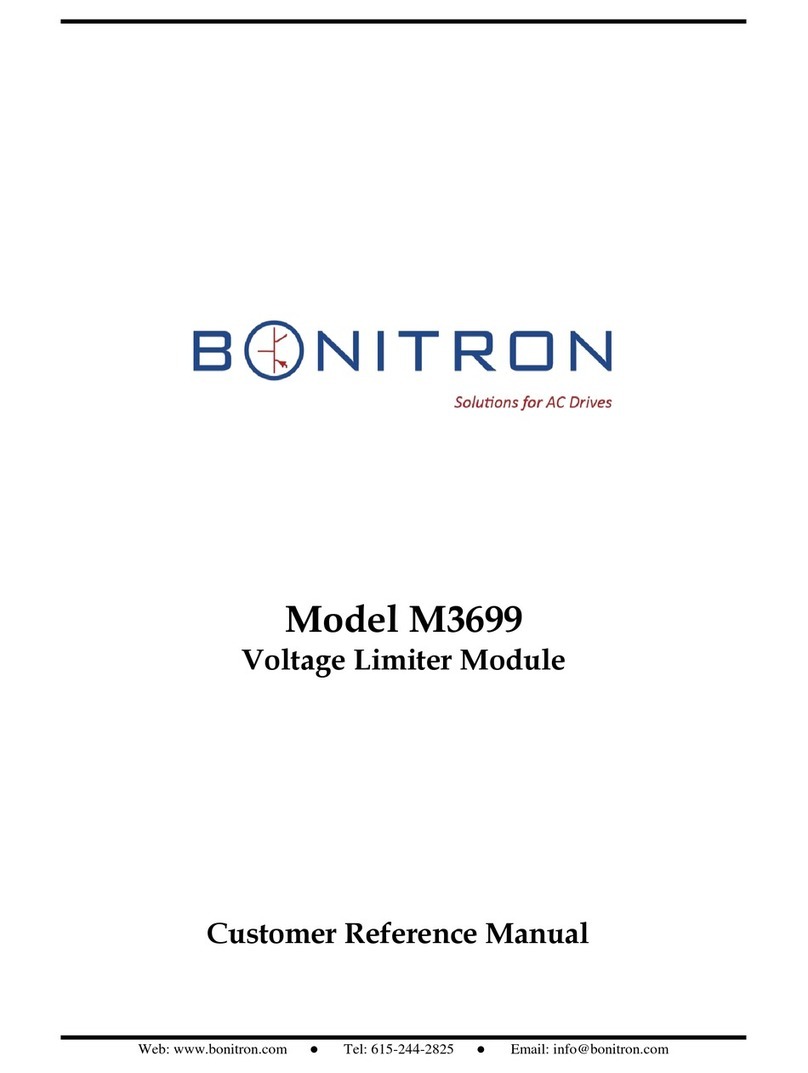
bonitron
bonitron M3699 User manual
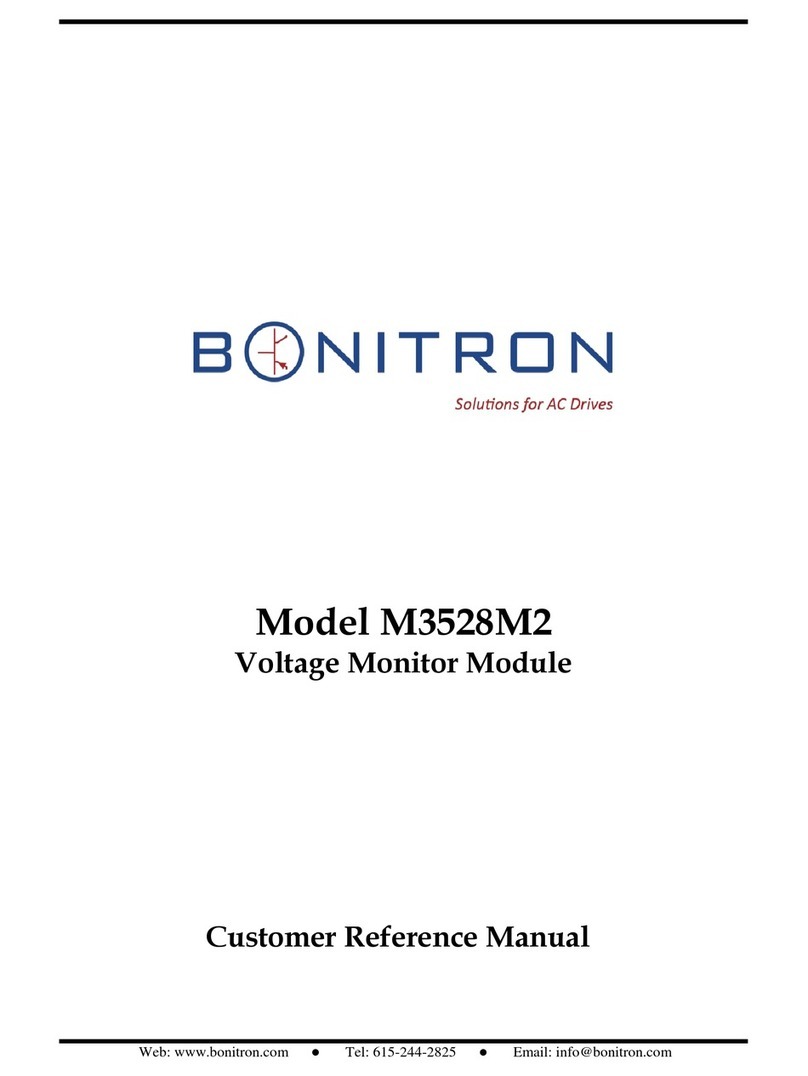
bonitron
bonitron M3528M2 User manual
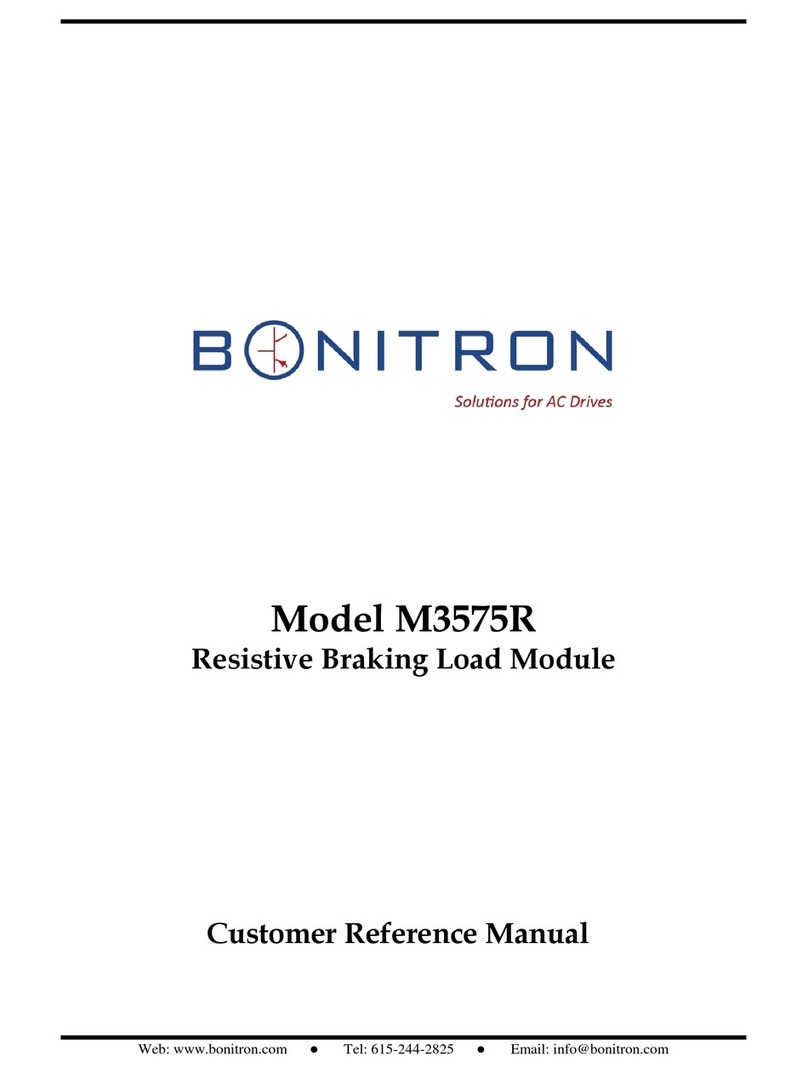
bonitron
bonitron M3575R User manual

bonitron
bonitron M3460RD User manual
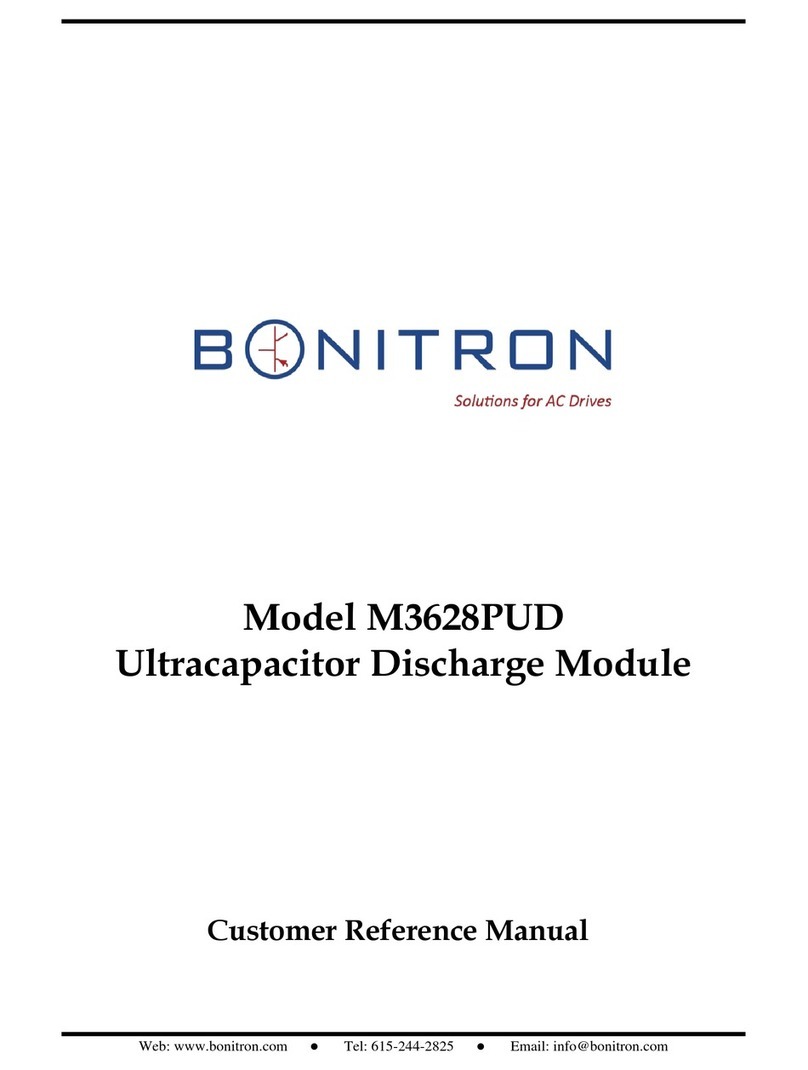
bonitron
bonitron M3628PUD User manual
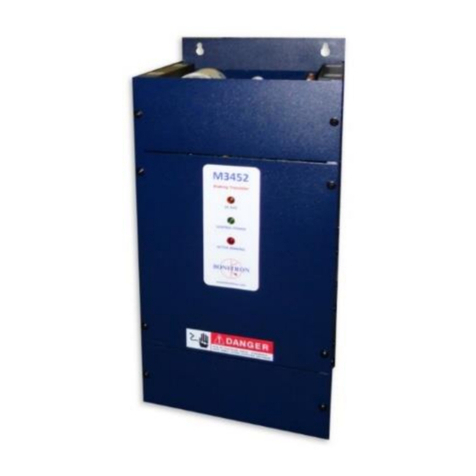
bonitron
bonitron M3452 EIP User manual

bonitron
bonitron M3452 User manual
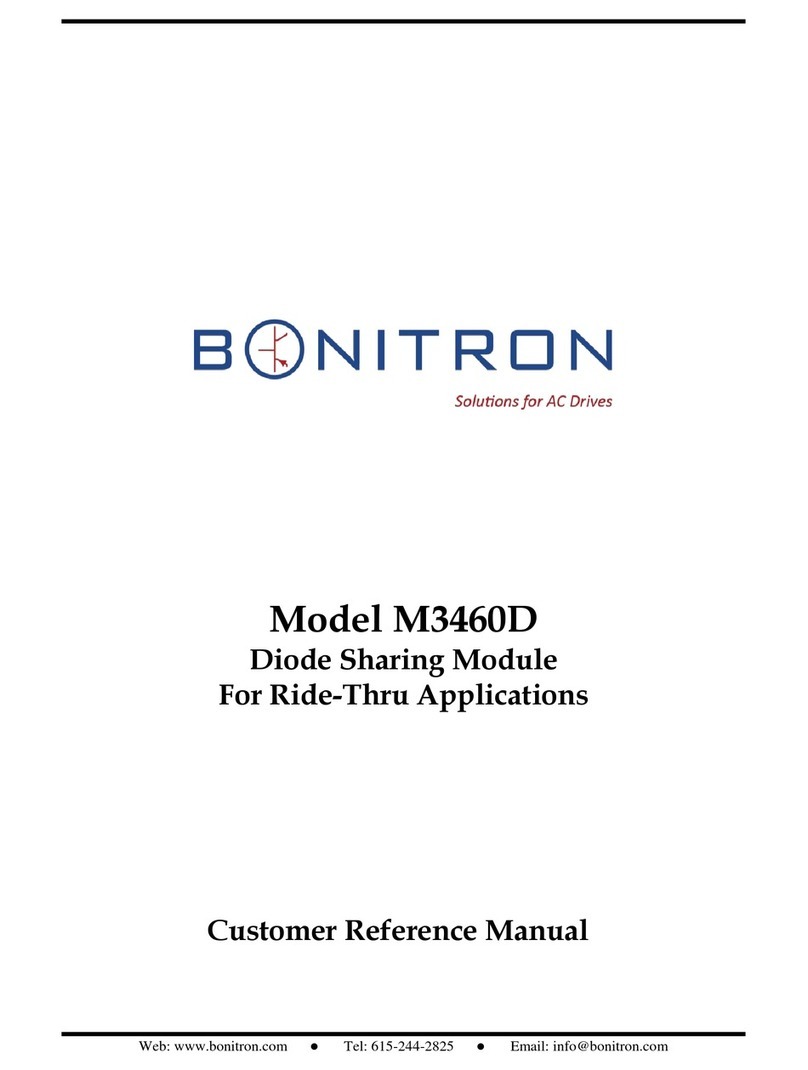
bonitron
bonitron M3460D User manual
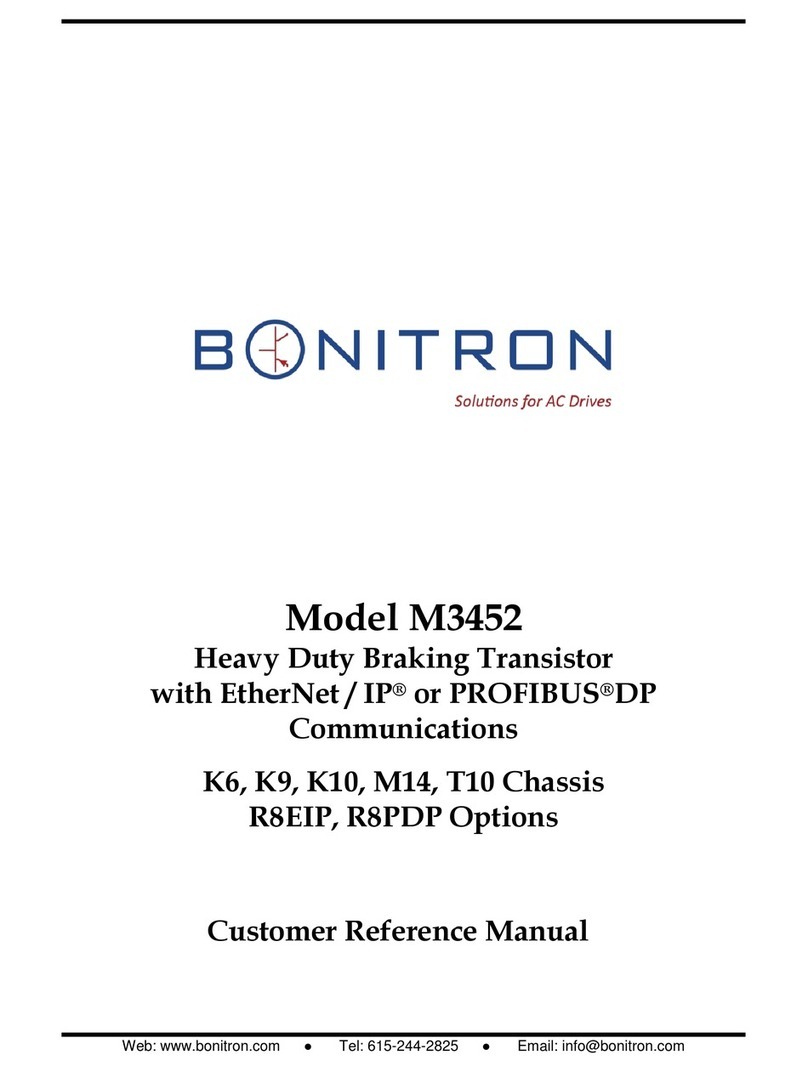
bonitron
bonitron M3452 User manual
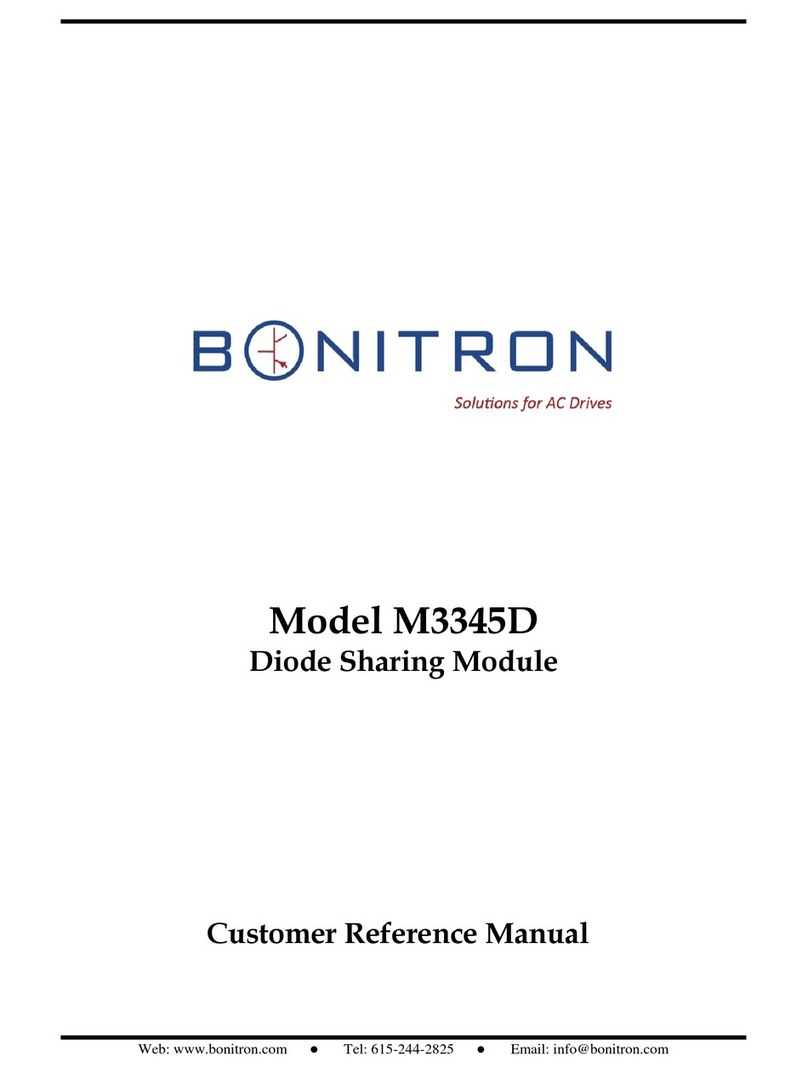
bonitron
bonitron M3345D User manual
Popular Control Unit manuals by other brands
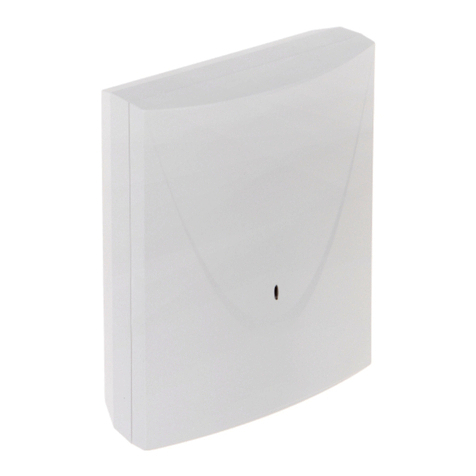
Satel
Satel GSM-X manual
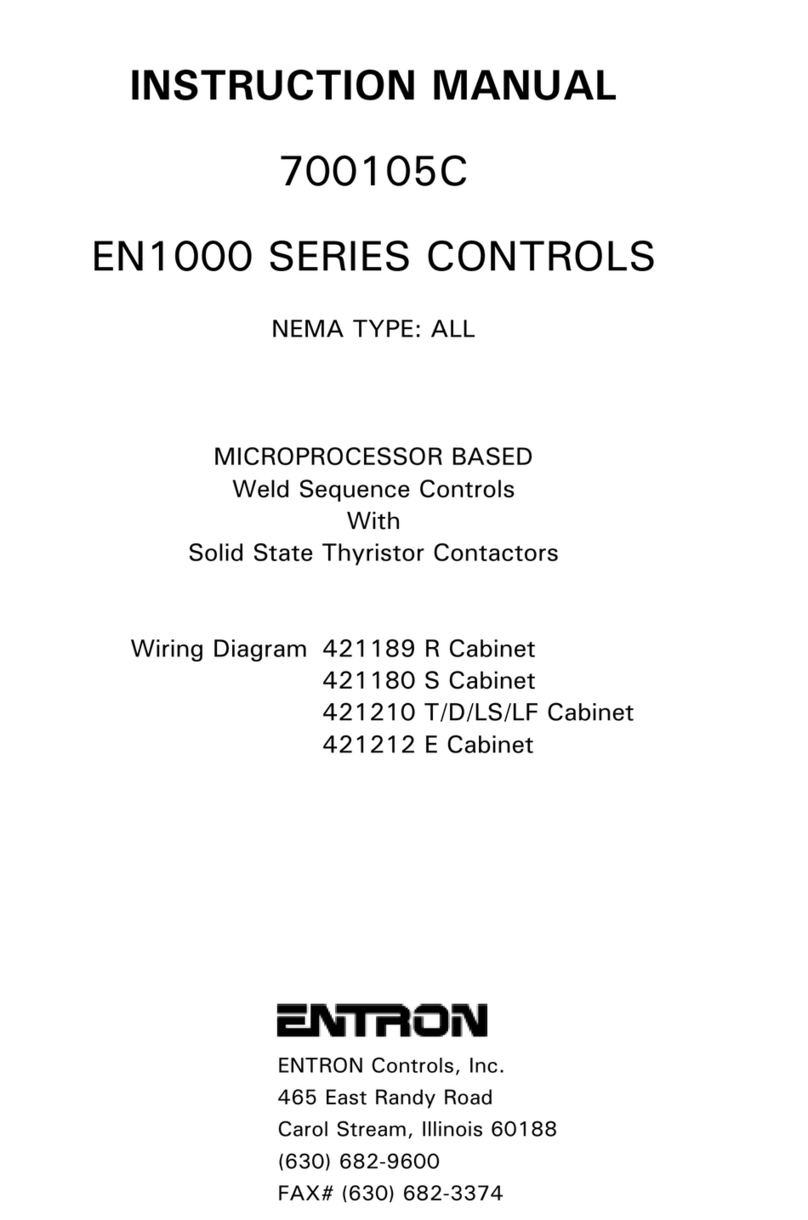
Entron
Entron EN1000 series instruction manual

Santec
Santec ESTATE Series manual
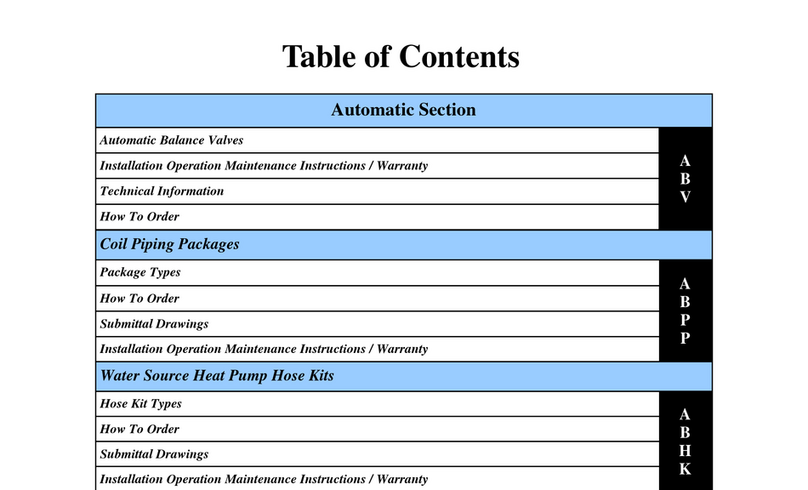
Hays Fluid Controls
Hays Fluid Controls HVAC Series technical information
NXP Semiconductors
NXP Semiconductors TWR-RF-SNAP user manual
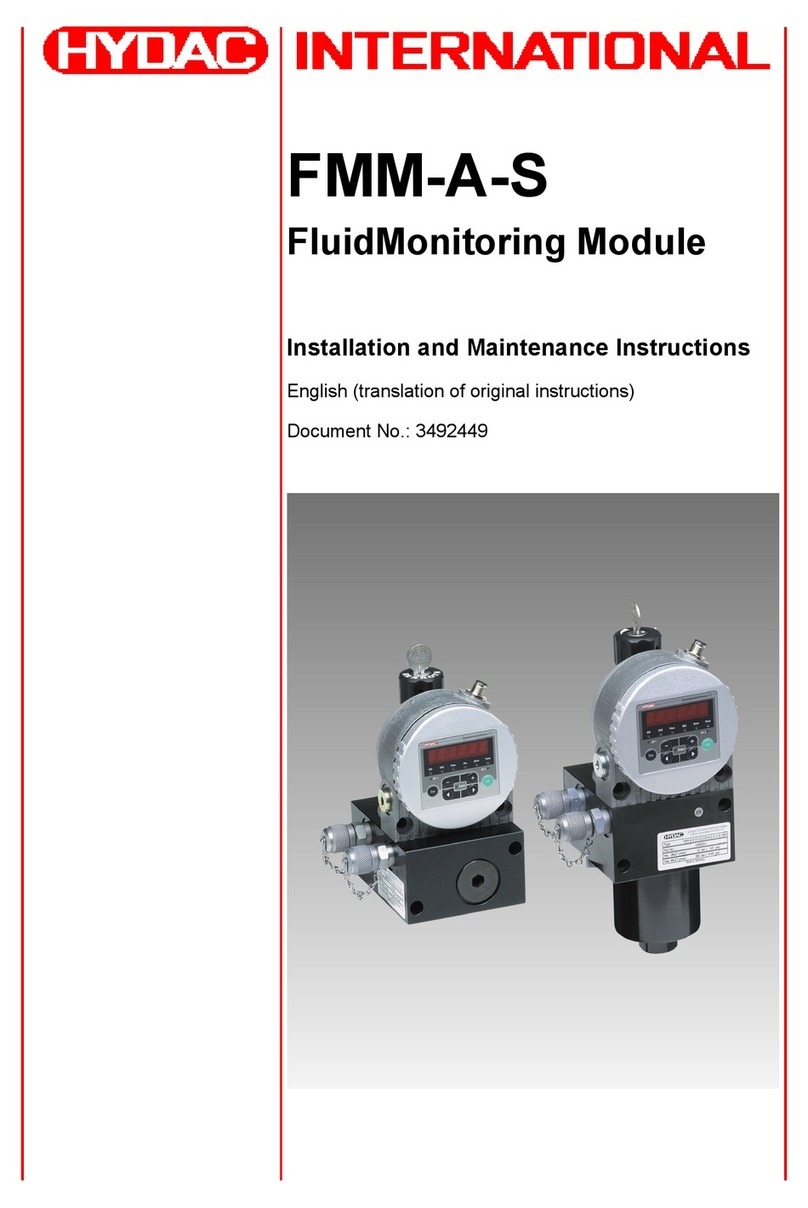
HYDAC FILTER SYSTEMS
HYDAC FILTER SYSTEMS FMM-A-S Series Installation and maintenance instructions
